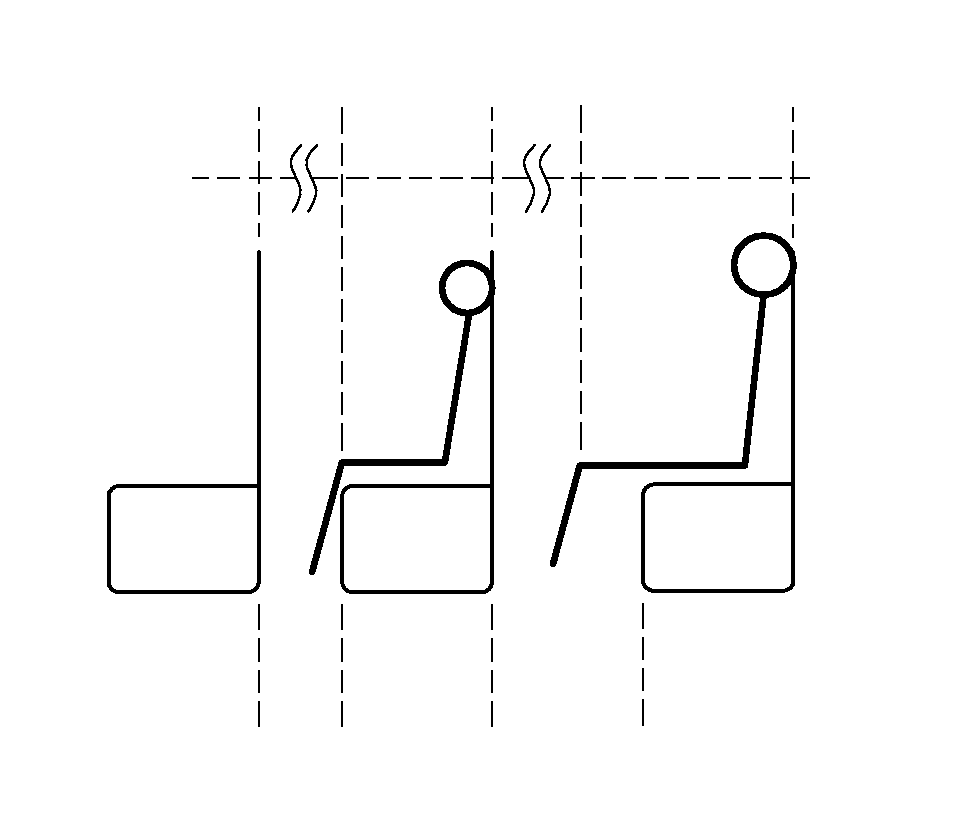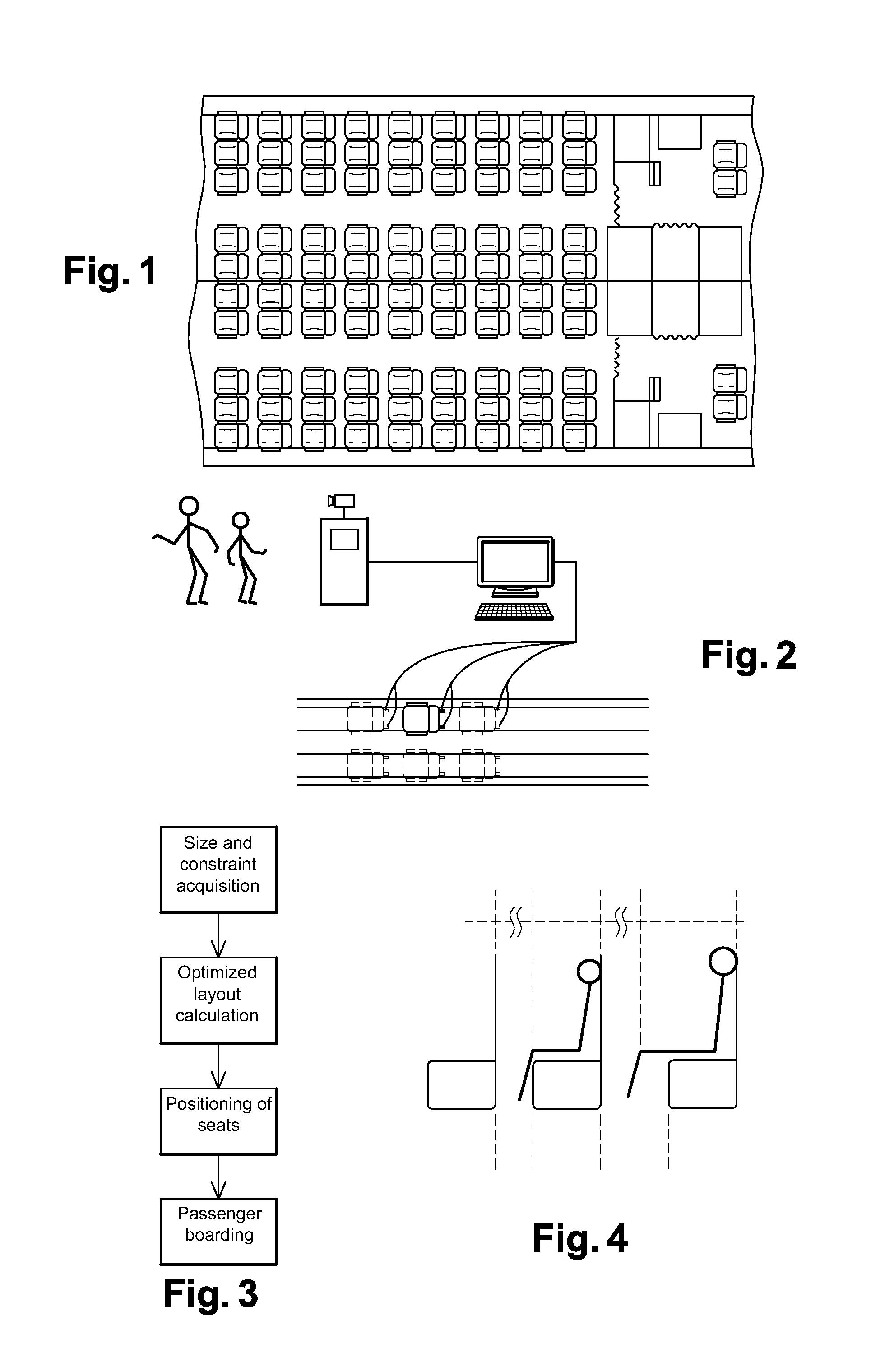Process and device for passenger cabin layout
a passenger cabin and layout technology, applied in the direction of aircraft crew accommodation, seating arrangements, instruments, etc., can solve the problems of reducing the image of the carrier, not being able to increase the passenger comfort, and affecting the passenger comfort of passengers, so as to reduce the number of seats
- Summary
- Abstract
- Description
- Claims
- Application Information
AI Technical Summary
Benefits of technology
Problems solved by technology
Method used
Image
Examples
Embodiment Construction
[0052]The invention is designed to be implemented within the framework of a room with predetermined dimensions that is suitable for accommodating individuals in a seated position for a certain period (in general several hours). This is the case in particular of a passenger cabin of a transport vehicle, for example an aircraft cabin with a very elongated, essentially rectangular floor.
[0053]Hereinafter, a longitudinal axis X is defined as essentially identical to the longitudinal axis of the cabin and in general oriented parallel to the axis of displacement of the vehicle.
[0054]Hereinafter, but in a not at all limiting manner, such a cabin is presumed to be equipped with means for attaching seats, for example in the form of rails that have attachment points distributed every several centimeters. In this way, each seat can be arranged in a large number of different longitudinal positions according to the layout that is selected.
[0055]The technical characteristics of the floor of the c...
PUM
 Login to View More
Login to View More Abstract
Description
Claims
Application Information
 Login to View More
Login to View More - R&D
- Intellectual Property
- Life Sciences
- Materials
- Tech Scout
- Unparalleled Data Quality
- Higher Quality Content
- 60% Fewer Hallucinations
Browse by: Latest US Patents, China's latest patents, Technical Efficacy Thesaurus, Application Domain, Technology Topic, Popular Technical Reports.
© 2025 PatSnap. All rights reserved.Legal|Privacy policy|Modern Slavery Act Transparency Statement|Sitemap|About US| Contact US: help@patsnap.com


